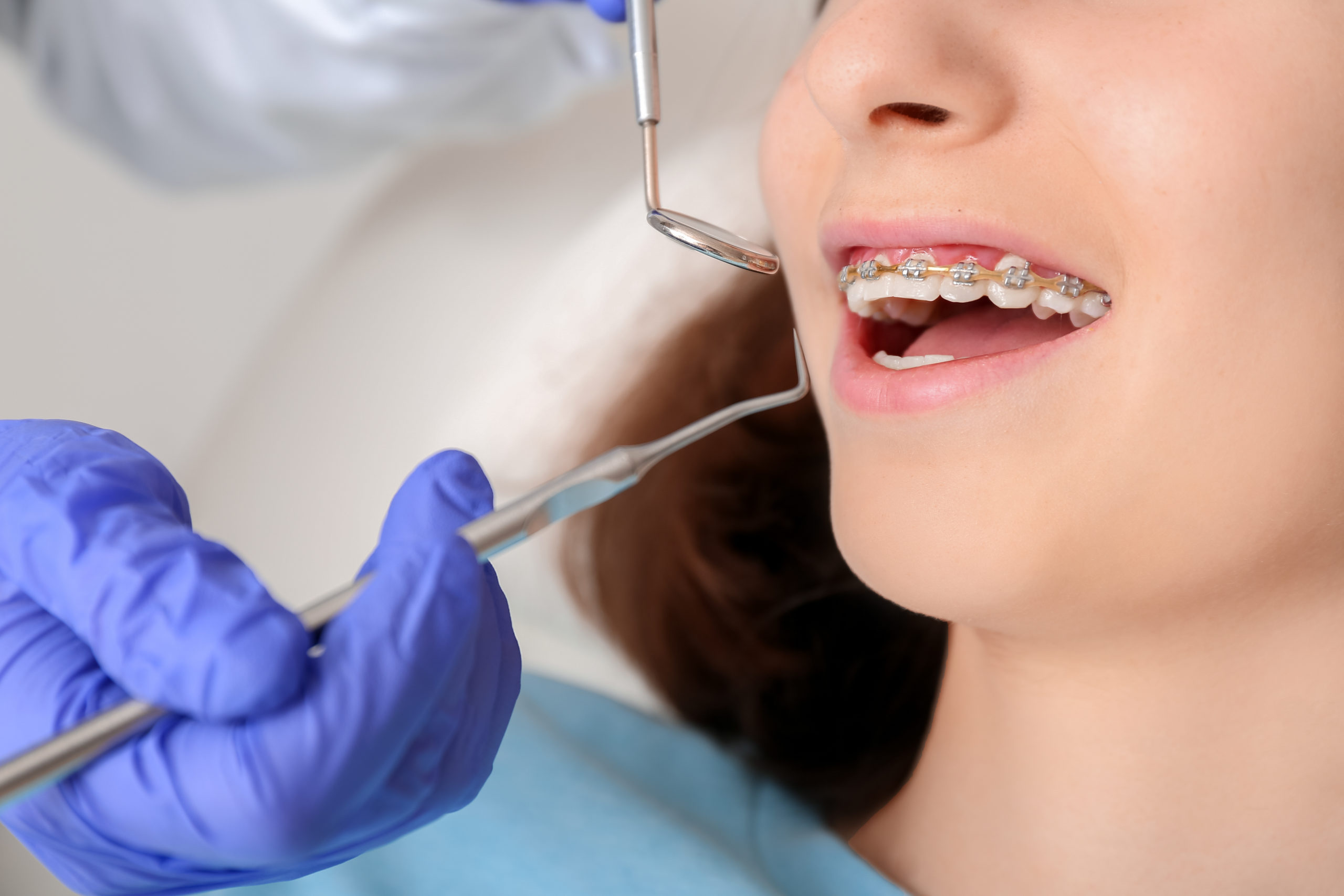Discovering the Right Cumming Orthodontist for Your Braces and Aligners Demands
Discovering the Right Cumming Orthodontist for Your Braces and Aligners Demands
Blog Article
Comprehensive Overview to Orthodontics Procedures for Dealing With Dental Misalignments
Recognizing the intricacies of each procedure, including their mechanisms, advantages, and possible downsides, is vital in making notified choices about one's orthodontic treatment. As we navigate through the comprehensive overview to orthodontic treatments for remedying dental misalignments, the elaborate information of each technique will unravel, dropping light on the path toward a harmonious and practical dental positioning.
Orthodontic Procedures Overview

In addition to clear aligners and standard braces, orthodontists may also recommend other interventions like headgear, palatal expanders, or retainers to attend to certain placement problems (braces). These treatments are tailored to each person's one-of-a-kind demands and may entail a combination of therapies to achieve the wanted results. Normal modifications and monitoring are critical components of orthodontic treatment to guarantee development gets on track and to make any kind of needed modifications along the road. By undergoing orthodontic treatments, patients can not only attain a straighter smile yet likewise boost their overall dental health and feature.
Typical Braces: Exactly How They Function
When considering orthodontic therapies for dental imbalances, conventional dental braces attract attention as a tried and true approach for correcting teeth positioning. Traditional braces contain braces, cables, and bands that work together to apply continual stress on the teeth, slowly relocating them into the desired positioning. The braces are affixed to the teeth making use of a special adhesive, and the wires are threaded with the braces. By adjusting the tension of the cables, orthodontists can manage the direction and force put on each tooth, leading them right into appropriate placement in time.
As stress is used to the teeth with the braces, the bone bordering the teeth is improved to sustain the new tooth positions. Clients will certainly require regular modifications at the orthodontist's workplace to make certain the dental braces continue to apply the correct pressure for reliable teeth motion.
Invisible Aligners: Benefits And Drawbacks
These clear, customized trays are virtually unnoticeable when put on, making them an attractive alternative for individuals seeking an extra cosmetically pleasing orthodontic therapy. People can remove the aligners prior to consuming or brushing their teeth, reducing the danger of food getting stuck in the appliance and simplifying the cleaning procedure.

Surgical Orthodontic Options
Surgical treatments in orthodontics present viable alternatives for addressing complex dental imbalances that might not be efficiently resolved with traditional orthodontic treatments. While invisible aligners and typical braces can deal with numerous orthodontic concerns, certain situations require surgical intervention to attain ideal results. Surgical orthodontic options are normally recommended for severe malocclusions, substantial jaw inconsistencies, and situations where the underlying bone framework requires modification to accomplish correct placement.
One common surgical orthodontic procedure is orthognathic surgical treatment, which entails repositioning the jaws to fix useful issues such as problem eating or speaking. This surgery is usually performed in collaboration with an orthodontist who aids line up the teeth prior to and after the treatment. Surgical orthodontics may likewise include treatments to reveal impacted teeth, remove excess gum tissue, or reshape the jawbone to produce a much more unified face account.
Prior to thinking about medical orthodontic alternatives, clients go through an extensive examination to figure out the need and possible advantages of such interventions. orthodontist. While surgery may seem difficult, it can substantially enhance both the function and looks of the smile in situations where standard orthodontic therapies fail
Retainers and Post-Treatment Care

Post-treatment care entails complying with the orthodontist's instructions diligently. This might consist of proper oral hygiene techniques, going to follow-up visits, and wearing the retainers as prescribed. Failing to abide by post-treatment treatment directions can result in regression, where the teeth slowly move back in the direction of their original positions. Constant Discover More Here retainer wear, great dental health, and regular dental exams are important for maintaining the outcomes achieved via orthodontic surgical treatment and guaranteeing the long-term stability of the corrected oral placement.
Conclusion
In conclusion, orthodontic procedures supply various choices for dealing with dental imbalances. Standard braces utilize steel brackets and cables to move teeth right into proper positioning. Undetectable aligners offer an even more very discreet choice but may not appropriate for all instances. Surgical orthodontic options are available for a lot more severe misalignments. Retainers are frequently made use of post-treatment to keep the new alignment. Overall, orthodontic procedures can effectively enhance dental health and aesthetic appearance.
As we navigate with the extensive overview to orthodontic procedures for correcting dental imbalances, the detailed information of each approach will certainly unfold, shedding light on the path toward a functional and harmonious oral placement. - aligners
One of the most common orthodontic therapies is the usage of dental braces, which consist of metal braces and cables that apply mild stress to slowly shift teeth right into the preferred setting.When thinking about orthodontic treatments for oral misalignments, conventional dental braces stand out as a reliable approach for remedying teeth positioning. Additionally, unseen aligners might not be suitable for intricate orthodontic problems that require even more considerable teeth movement, as they are commonly advised for moderate to modest cases. Retainers are custom-made orthodontic gadgets designed to hold teeth in their remedied positions after the conclusion of orthodontic that site treatment.
Report this page